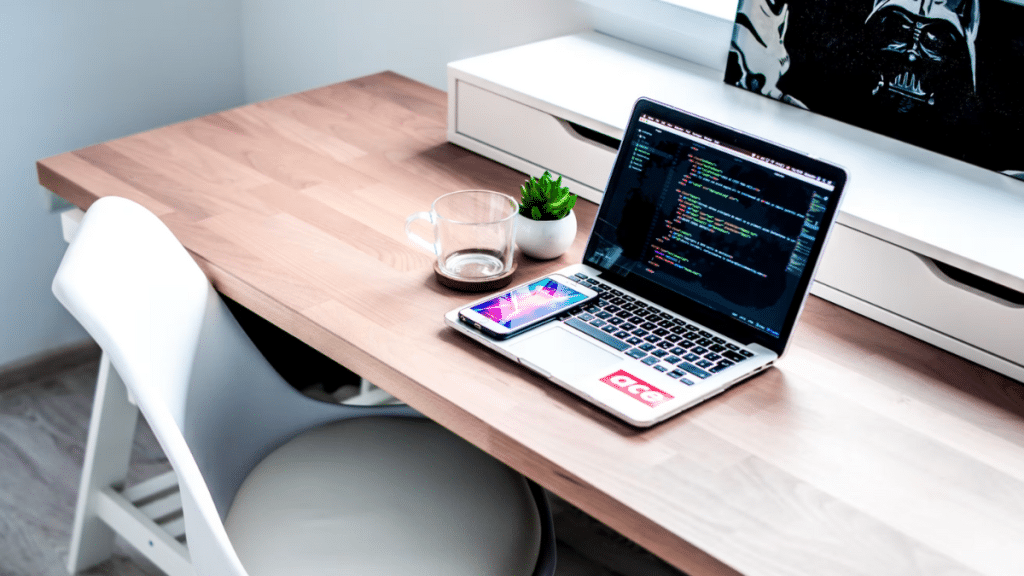Let’s talk about something that’s quietly wrecking your team’s productivity: visual noise. It’s not loud like a phone ringing or a Slack ping — but it’s just as disruptive. Open sightlines across desks, hallways, and monitors create a constant visual input your brain has to sort through. And it’s exhausting.
In a landmark MIT study on open office dynamics, researchers found that productivity dropped by up to 42% in environments with uncontrolled sightlines. Employees working within high-visibility zones showed more frequent task switching and reported increased fatigue despite fewer audible distractions.
Why? Our brains are wired to respond to motion in our peripheral vision. A coworker walking by, someone adjusting their chair, a screen flickering across the room — all of it breaks your flow without you even realizing it.
Here’s where smart design comes in. Aluminum glass partition systems offer a rare trifecta: visual privacy, natural light, and better acoustics. They reduce sightline clutter by subtly segmenting space — without making the office feel like a cubicle farm. The glass lets light through, keeping things bright, while the frames dampen noise and provide a sense of defined boundaries.
Unlike clunky drywall, these dividers feel intentional and flexible. You get the openness everyone wants, minus the distractions. And that alone can transform your team’s ability to stay focused.
Upgrade Worth Every Penny: Smart Glass Dividers
When it comes to productivity investments, smart glass dividers are the ultimate sleeper upgrade. They’re sleek, future-proof, and more versatile than you might think. But not all smart glass is created equal — so let’s break it down.
Frame Materials Compared: Aluminum vs. Steel vs. Wood
- Aluminum is lightweight, rust-resistant, and works beautifully in modern office aesthetics. It also blends well with tech-forward spaces and has matte or polished finishes.
- Steel offers higher strength but at a cost — it’s heavier, more expensive, and less flexible to install or move. It does lend an industrial vibe, which may or may not suit your culture.
- Wood frames bring warmth and texture but can clash with minimal or glass-heavy designs. They also require more upkeep over time.
For most productivity-focused workspaces, aluminum is the sweet spot: light, strong, clean-looking, and easy to maintain.
Transparency Spectrum: When to Use Frosted, Clear, or Tinted
Smart glass gives you total control over transparency — a game-changer in shared environments.
- Clear Mode is ideal for collaborative zones where openness matters.
- Frosted Mode offers privacy with a professional look — perfect for phone rooms, executive offices, or small meeting pods.
- Tinted or Gradient Styles create visual interest and can also help with glare reduction from windows or screens.
The real value comes from flexibility. With a switch flip, one space can go from open collaboration to focused work mode — without moving a single piece of furniture.
Quick Wins Under $500
Not every productivity boost needs a renovation budget. Here are a few budget-friendly upgrades that actually make a difference:
- USB-Powered Desk Lights – Personalize brightness and color temp for less eye strain.
- Magnetic Divider Attachments – Add frosted or textile panels to metal frames for quick privacy.
- White Noise Machines – Surprisingly effective at masking chatter in open areas.
Minor tweaks, significant results. Each of these helps reduce cognitive load and improve focus, especially in shared spaces.
The Psychology Layer
Productivity isn’t just physical — it’s psychological. How a space feels greatly impacts how people work within it.
Color Temperature Effects on Focus
Studies show that cooler light (5000–6500K) enhances alertness and focus. Pair that with neutral aluminum frames or light-toned dividers, and the brain associates the environment with clarity and task orientation.
Warmer tones (2700K–3500K), often paired with wood frames or fabric panels, are better suited for break areas or brainstorming zones where relaxation matters more than intense focus.
Believe it or not, the frame color and material can subtly reinforce these effects, so use them intentionally.
The “Territoriality” Benefit of Semi-Private Spaces
Humans are territorial creatures — even in the office. Providing employees with defined semi-private zones, such as a smart-glass panel between desks, taps into that instinct.
It gives people a sense of ownership, which boosts focus, reduces social anxiety, and increases their willingness to spend longer periods in deep work. It’s not isolation — it’s intentional independence.
Why Most Offices Upgrade Wrong
Here’s the truth: Most office upgrades fail because they chase trends, not outcomes.
Open-Plan Bandwagon Effect
Everyone jumped on the open-office trend, thinking it would create collaboration. In reality, it sparked a wave of noise complaints, constant interruptions, and more people working with noise-canceling headphones than talking.
Measuring the Wrong Metrics
Instead of measuring focus hours or task efficiency, companies measure square footage per employee or how “open” a space looks. But wide-open space doesn’t mean high output.
A productive space balances visibility, privacy, and control — not just minimal walls.
The Productivity Upgrade Mindset
True productivity upgrades don’t just look good — they work smarter. Whether it’s smart glass, visual zoning, or psychological tweaks, your space should help people do their best work, not just survive the 9–5. Start with focus, and the rest will follow.
